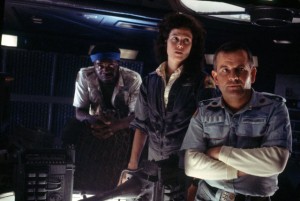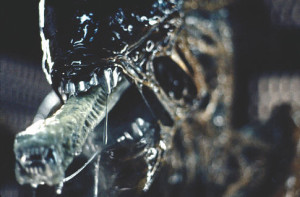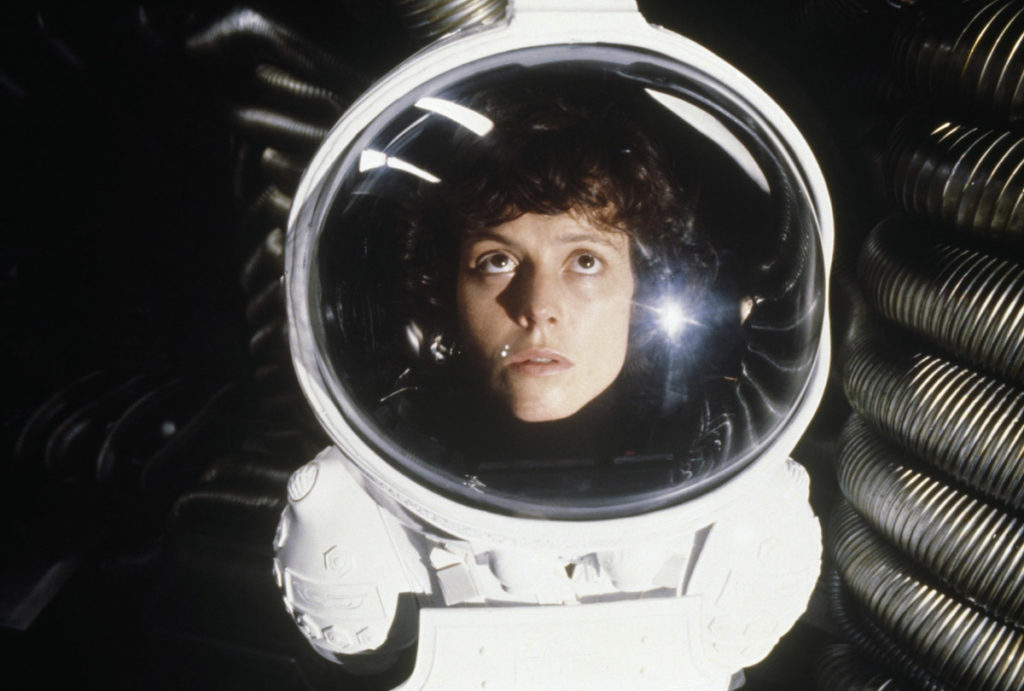With the movie genres of horror and science fiction toting a fine line and often found locked in a muddled tango, one of the first films to successfully blend the two elements is the 1979 Ridley Scott classic, “Alien.” Like the harrowing depths of the ocean, outer space has limitless possibilities for the backdrop of fiction as terrain that is unexplored and uncharted by man. Because of this, “Alien” takes the great fear of the unknown – in this case space exploration – and leaves a lasting image of terror.
The seven-member crew of the space shuttle Nostromo, lead by Captain Dallas (Tom Skerritt) is returning to Earth from a refining expedition to Thedus, when they intercept a mysterious transmission they believe to be a distress signal. They alter course to investigate and discover the wreckage of an unknown spacecraft.
Dallas, along with Executive Officer Kane (John Hurt) and Navigator Lambert (Veronica Cartwright) depart the ship for a closer look. Remaining on board the ship, Warrant Officer Ripley (Sigourney Weaver in what amounts to her debut performance – Weaver would go on to mega stardom in “Ghostbusters,” “Gorillas in the Mist,” and all the sequels in the “Alien” anthology) deciphers the transmission to in fact be a warning.
While exploring, Kane discovers a chamber with numerous eggs, one of which hatches a creature that attaches itself to his face. They return to the ship and go against Ripley’s orders to quarantine Kane by bringing him onto the ship to attempt to remove the creature.

The mistake proves costly for the members of the crew as the alien hatches in a gruesome fashion and disappears somewhere on the ship, where it proceeds to eliminate the crew one by one.
As far as horror goes, most adult viewers will not find “Alien” scary. Nonetheless, it does feature a grisly premise – a crew of seven confined to a small space shuttle being hunted and eliminated one by one (in a fashion similar to “Predator” and “The Thing“). For the characters, there is no way to escape from the situation – they simply cannot leave the ship (much like the passengers on the doomed liner Titanic).
The plot of Alien is quite simple, not as action packed as “Predator” and not as unique as the shape-shifting creature in “The Thing.” There is little depth given to the characters and an almost over-the-top predictability as to what will happen next. The dim lighting adds to suspense, but also clouds clarification resulting in some confusion with the viewer, and death scenes less brutal than they could have been. The effects for “Alien” are rather good, especially when you consider it is over 30 years old.
The effects for “Alien” are rather good, especially when you consider it is over 30 years old.
The inspirations drawn from “Alien” are plentiful. The creature in the 1987 movie “Predator” closely resembles the creature depicted in “Alien.” And while “Alien” draws obvious inspiration from the blockbuster “Star Wars” (released two years prior) it is quite obvious the Rancor Monster from “Return of the Jedi” is modeled after the alien.
And Mel Brooks’ 1987 comedy “Spaceballs” has numerous references and parodies from Alien, including an even keeled female voice politely counting down the self destruction of the ship and the memorable diner scene at the end with a cameo by John Hurt himself.
Overall, “Alien” is worth checking out for its iconic status alone. Don’t expect to be terrified.



2 Comments
Only a B- grr It’s a early horror slasher that deserves more
credit. A- please
Pingback: » Mission: Impossible – Ghost Protocol (PG-13)